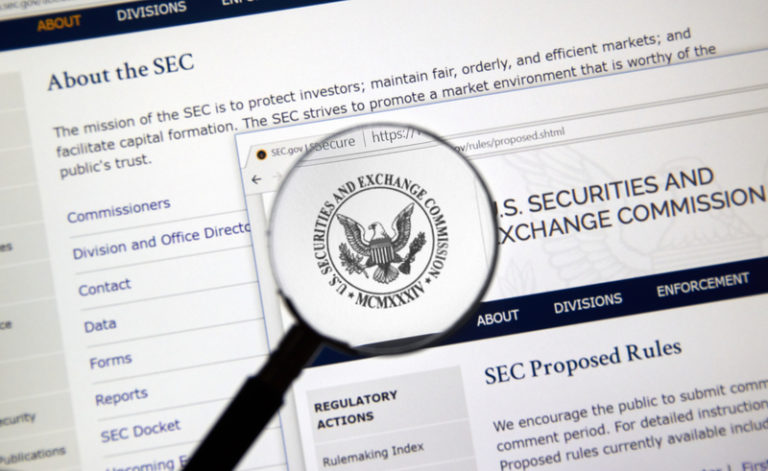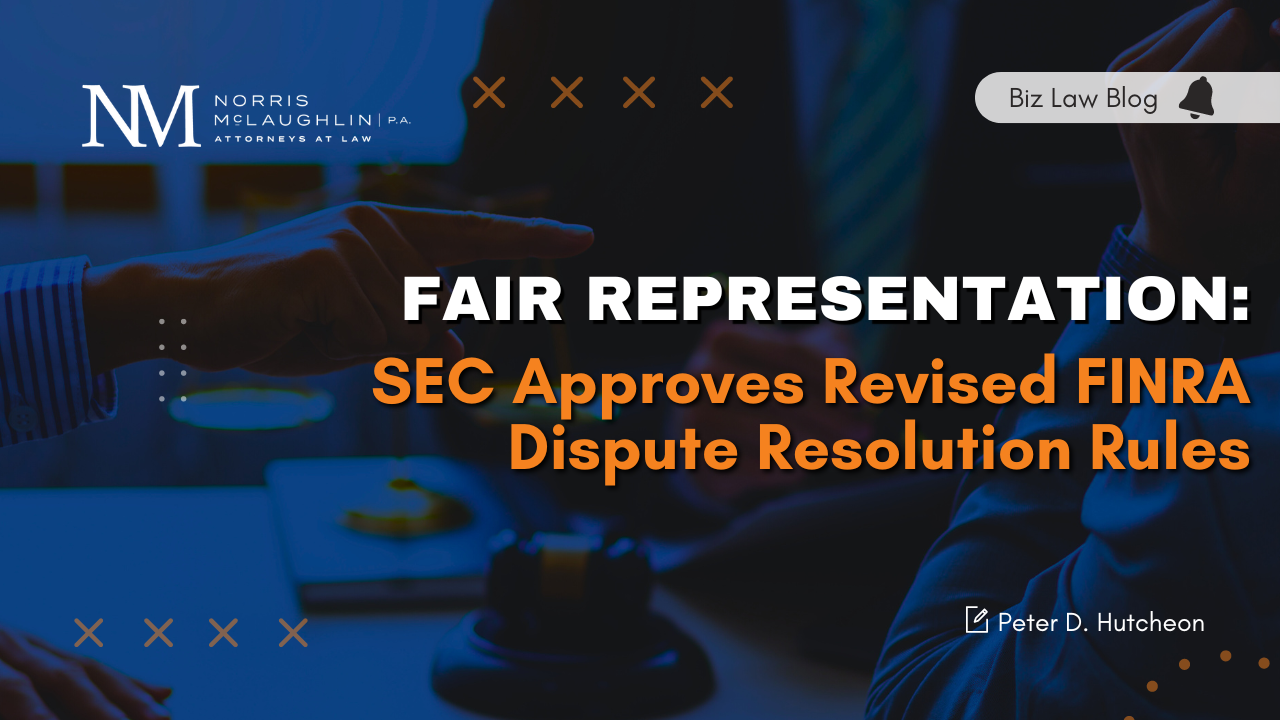Taming the Elephants: SEC Jumbo Trader Risk Alert

On December 16, 2020, the U.S. Securities and Exchange Commission’s (“SEC”) Office of Compliance Inspections and Examinations (“OCIE,” since reorganized as a separate division of the SEC, i.e., the Division of Examinations [“DivEx”]) issued a Risk Alert entitled “Observations from Examinations of Broker-Dealers and Investment Advisers: Large Trader Obligations.” My December 8, 2020, blog post, “Meeting Specified Standards: the SEC’s OCIE Assesses Compliance,” emphasizes the importance of compliance by regulated industry participants and notes DivEx reports from examinations of a number of recurring deficiencies.
In its December 16 Risk Alert, DivEx reports on similar inspections of broker-dealers and investment advisers and finds, if anything, even more frequent compliance issues concerning “Large Traders” as defined, with respect to recordkeeping, monitoring, and reporting relevant information using the Electronic Blue Sheet system established (and, in 2001, enhanced) under SEC Rule 17a-25. This led DivEx to exhort broker-dealers and investment advisers to review their trading activities to determine if they were Large Traders, and if so, to insure compliance with SEC Rule 13h-1, especially given the rapidly approaching full-scale implementation of the Consolidated Audit Trail on April 26, 2021.
Large Trader Obligations for Broker-Dealers and Investment Advisors
The Large Trader reporting system was established by SEC Rule 13h-1, effective October 3, 2011. The SEC had twice proposed adopting such a system, but neither proposal was adopted. In the aftermath of the Great Recession (2007-2009), the concept for such a system was resuscitated, a resuscitation that was even greater immediately after the Flash Crash of May 6, 2010, leading to the promulgation of Rule 13h-1. As the SEC said in the Adopting Release No. 34-64976:
The Commission’s ability to analyze market movements and investigate the causes of market events in an expeditious manner, as well as efficiently conduct investigations of regulated entities and bring and prosecute enforcement matters, is influenced greatly by its ability to promptly and efficiently identify significant market participants across equities and options markets and collect uniform data on their trading activities. …[The Flash Crash] has emphasized the importance of enhancing the Commission’s ability to quickly and accurately analyze and investigate major market events, and has highlighted the need for an efficient and effective mechanism for gathering data on the most active market participants.
Later in that Release, the SEC went on to note that it was… “in the process of conducting a broad and critical look at U.S. market structure in light of the rapid developments in trading technology and strategy.” U.S. securities markets were in the words of the Release “experiencing a dynamic transformation,” brought on by “[e]lectronic trading,” which allowed “ever-increasing volumes of securities transactions to take place across an expanding multitude of trading systems.” The SEC also noted in the Release that this new Large Trader reporting system would then meld with its other 2010 SEC proposals to establish a Consolidated Audit Trail (“CAT”). See my September 8, 2020, blog post, “SEC Seeks to Increase the Security of the Data on the Consolidated Audit Trail National Market System,” for more information about CAT.
What Then Constitutes a “Large Trader?”
Under the Rule, any person whose transactions in National Market System (“NMS”) securities equal or exceed 2 million shares or $20 million during any calendar day, OR 20 million shares or $200 million during any calendar month. The Rule applies to investment advisers based upon the number of shares over which they have investment discretion. So if the adviser has trading discretion over a number of shares that meets the definitional thresholds it will be deemed a Large Trader, even if no trades occur. In addition, the Rule requires broker-dealers who know or have reason to know that a person or entity that trades at a volume (number of shares or dollar amount) that exceeds the Large Trader thresholds but has not self-identified as such, is to be treated as an Unidentified Large Trader. Large Traders must file with the SEC a Form 13H that provides the SEC with the following information:
- The Large Trader’s business
- The Trader’s regulatory status
- Identity of affiliates
- Governance structure
- Broker-dealers with which the Trader has accounts
Upon receipt of the initial Form 13H, the SEC will assign to that Large Trader a unique Large Trader identification number (“LTID”). The Large Trader is then required to disclose its LTID to any broker-dealer effecting any transaction on behalf of the Trader, and must also identify to that broker-dealer ALL of the Trader’s accounts with that broker-dealer. The Form 13H must be updated periodically, quarterly in case of any material change, and at least annually. Broker-dealers must assign a unique identifier to any account used by an Unidentified Large Trader.
Broker-dealers are to maintain records of all transactions effected through an account with the broker-dealer for each Large Trader or Unidentified Large Trader. If a broker-dealer is itself a Large Trader, the broker-dealer must report about any trading activity in a proprietary or other account over which the broker-dealer exercises investment discretion. Upon request from the SEC, the broker-dealer must report certain Large Trader information using the Electronic Blue Sheets system. A broker-dealer does not have a responsibility with respect to the trading activity where the broker-dealer does not know or have reason to know that a trader is a Large Trader AND the broker-dealer has policies and procedures reasonably designed to identify Large Traders, even if Unidentified, based upon the activity thresholds set out above. It treats any trader identified by these policies and procedures as an Unidentified Large Trader, and the broker-dealer informs the trader of the trader’s obligations under Rule 13h-1. As DivEx notes in its December 16 Risk Alert: “The broker-dealer monitoring requirements are intended to promote awareness of and foster compliance with Rule 13h-1.”
SEC Jumbo Trader Risk Alert
DivEx goes on to report that it “conducted a number of examinations that focused on … compliance with Rule 13h-1.” The DivEx staff observed “numerous instances of potential non-compliance,” including instances where a trader has failed to self-identify as a Large Trader, filed the required Form 13H, and provided its LTID in connection with trading activity. The examinations also suggested that there was a general lack of awareness of the Rule and its applications. So for instance, an investment adviser may enter into a discretionary client/customer agreement and then the trading activity exceeds the Large Trader thresholds. The investment adviser might not have recognized that it, the investment adviser, is a Large Trader as well as the client/customer. It is this collected body of observations gained from actual examinations that inform DivEx’s commentary found in the December 16 Risk Alert.
The Risk Alert calls on broker-dealers and investment advisers to review their respective policies and procedures in this area and to self-assess their respective record of compliance, including filing and amending their respective Forms 13H, noting that in a number of cases in response to DivEx examinations, Forms 13H for current and prior periods were filed voluntarily. The Risk Alert also reminds broker-dealers to comply with reporting requirements under ALL of the following: the Electronic Blue Sheet system, CAT, and the Rules of the Financial Institution Regulatory Authority (“FINRA”). DivEx “encourages market participants to visit the [SEC] Division of Trading and Markets’ ‘Responses to Frequently Asked Questions Concerning Large Trader Reporting’ for additional [SEC] staff views. The Risk Alert notes that particular account trading information regarding Large Trader and Unidentified Large Trader activity must be reported to CAT beginning April 16, 2021. In addition, in the case of the occurrence of a Reportable Event (as defined in CAT) involving an account used by a Large Trader (whether or not self-identified), the broker-dealer providing OR clearing that account MUST provide applicable identifier information to CAT. The Risk Alert urges that broker-dealers and investment advisers opening new account relationships consider this potential reporting obligation (in addition to all else that Rule 13h-1 mandates) as part of the new account process.
In addition to following Division of Trading and Markets’ guidance cited in the Risk Alert, you may wish to consult with experienced securities counsel such as those at Norris McLaughlin, P.A. If you have any questions about this post or any other related securities or general business law matters, please feel free to contact me at pdhutcheon@norris-law.com.




